There are numerous types of pollen within a variety of species. Various types of pollen were examined with the use of Dynamic Image Analysis, to determine whether their morphology (shape properties) could be implemented as a means of differentiating between the different types, and also to distinguish between entire pollen grains and fragments or debris. Size-only techniques are sometimes unable to differentiate in this way.
| |
Measure |
Range of Acceptance |
| Applicable Measures |
Equivalent Circular Area Diameter |
1 – 500 microns |
| Smoothness |
0 to 1.0 |
| Circularity |
0 to 1.0 |
| Opacity |
0 to 1.0 |
Procedures and Results
A collection of six distinct types of pollen samples were examined: Alder, Short Ragweed, Pecan, Redtop, Timothy Grass, and Paper Mulberry. Each sample was generated by dispersing them in water and subsequently mixing them before examination. Particle size-only apparatus will record information on the assumption that every particle embodies a round or spherical morphology.
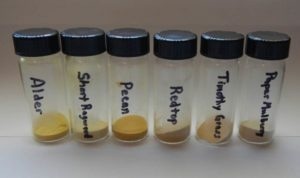
Image Credit: Vision Analytical Inc.
This might be satisfactory for those samples that embody a uniform morphology, but for those characterized by an irregular morphology, this methodology is insufficient. This study will demonstrate that shape, in conjunction with size, is a more adequate technique of differentiating among multiple pollen types.
The Particle Insight is capable of analyzing thousands of particles in a matter of minutes, and can yield results comprising 30 size and shape measurements. The Particle Insight is also capable of performing comprehensive statistical analyses of the pollen particles' morphology, as well as differentiating them according to this morphology information.
Timothy Grass Pollen

Image Credit: Vision Analytical Inc.
The Timothy Grass Pollen demonstrated a unimodal size but possessed broad circularity. Thumbnail images yielded confirmation that there are some spherical particles displaying uniformity, but there were also certain particles composed of debris, or segments of fragmented pollen particles. The Correlation Plot permits the operator to correlate two chosen measurements. In this instance, circularity was plotted against size to generate further features of the outlying particles.
Red Top Pollen
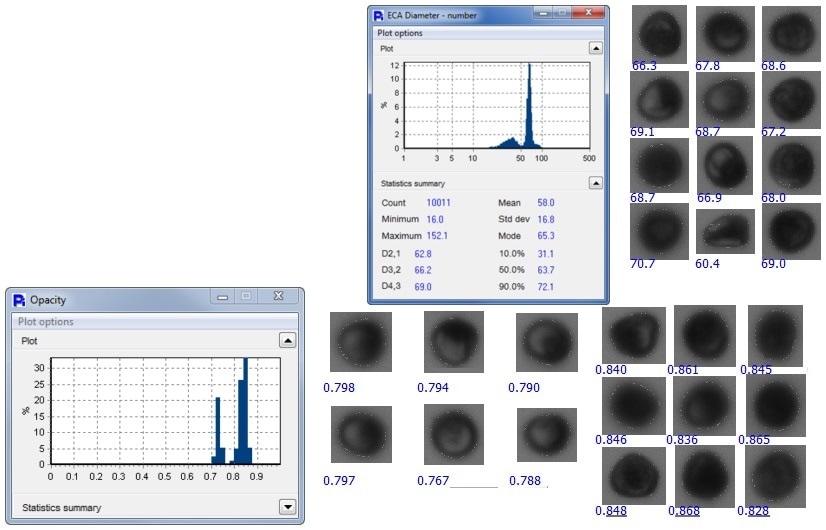
Image Credit: Vision Analytical Inc.
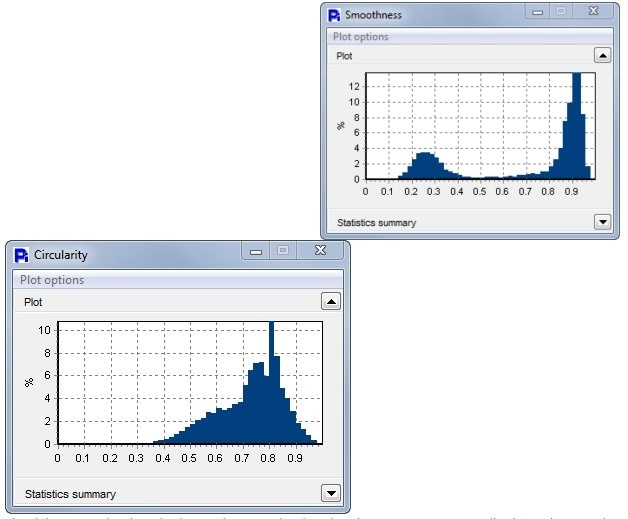
Image Credit: Vision Analytical Inc.
Red Top Pollen grains are uniformly dark, but embody divergent opacity values. Thumbnail images similarly displayed debris and segments of fragmented pollen particles. Opacity is an extremely efficacious measurement. It is a function of the particle’s intensity average, computed as a fraction between 0 and 1; 0 is completely transparent and 1 is completely opaque (black). Red Top Pollen opacity is characterized by an explicit bi-modal distribution.
The Particle Insight is capable of displaying and arranging the particles by all measures, encompassing opacity. As well as being represented in the thumbnail images, the debris particles are statistically depicted here as the smaller sized particle category within the ECA Diameter distribution. A correlation plot would reveal that these accord with the particles embodying low smoothness.
Paper Mulberry Pollen
Paper Mulberry Pollen possesses remarkably homogeneous size and opacity, as demonstrated in the statistical histograms. The smoothness graph describes a bimodal distribution, representing two categories of pollen grains. The thumbnail images suggest that the less smooth particles are equivalent to full pollen particles, but embody a divergent shape.
Pecan Pollen
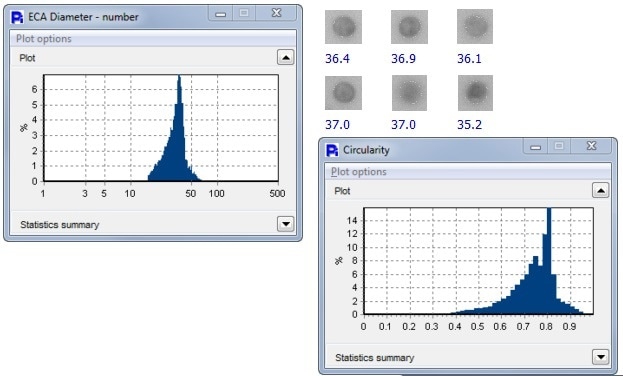
Image Credit: Vision Analytical Inc.
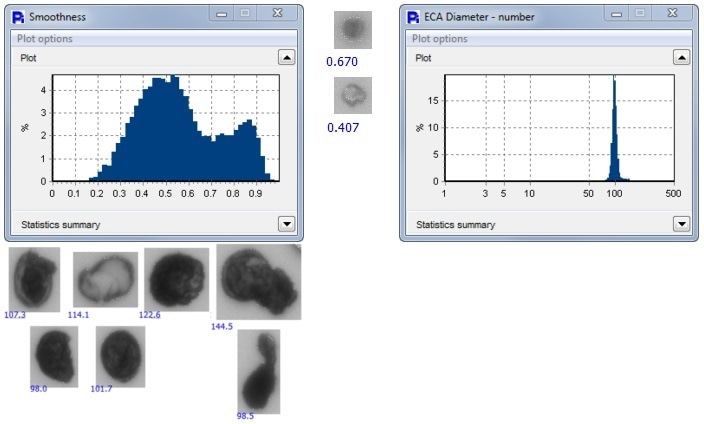
Image Credit: Vision Analytical Inc.
Pecan Pollen provides compelling evidence that size data alone is not always sufficient. The ECA Diameter reveals these particles to be extremely unimodal, and therefore universal roundness might be stipulated. However, after the circularity, smoothness and opacity are recorded, a remarkably broad spectrum of particle shapes is consequently revealed, thus imposing a critical limit on the value of size data.
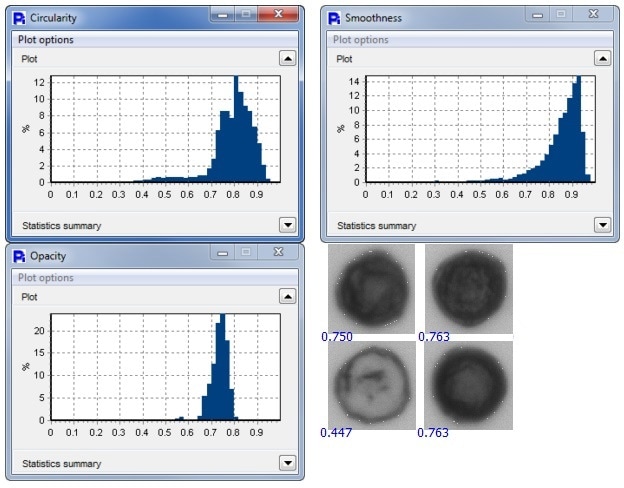
Image Credit: Vision Analytical Inc.
Short Ragweed Pollen
Short Ragween Pollen embodies extremely homogeneous size, circularity, and opacity properties.
Alder Pollen
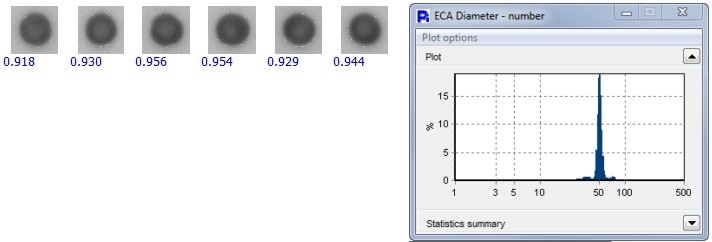
Image Credit: Vision Analytical Inc.
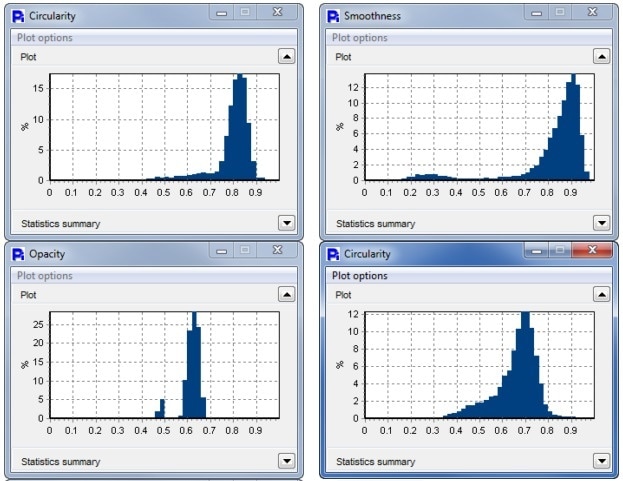
Image Credit: Vision Analytical Inc.
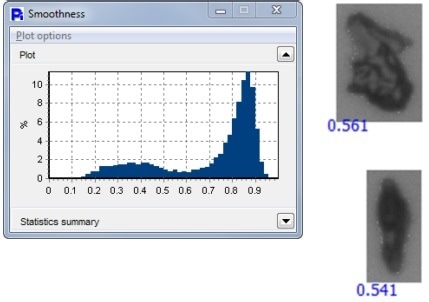
Image Credit: Vision Analytical Inc.
Alder Pollen data demonstrates that a significant quantity of the particles embody low smoothness. As indicated by the thumbnail images, this was brought about by the presence of debris embodying different properties to the pollen. This data might be a helpful means of enhancing the pollen acquisition procedure.
Customizable Statistical Reports
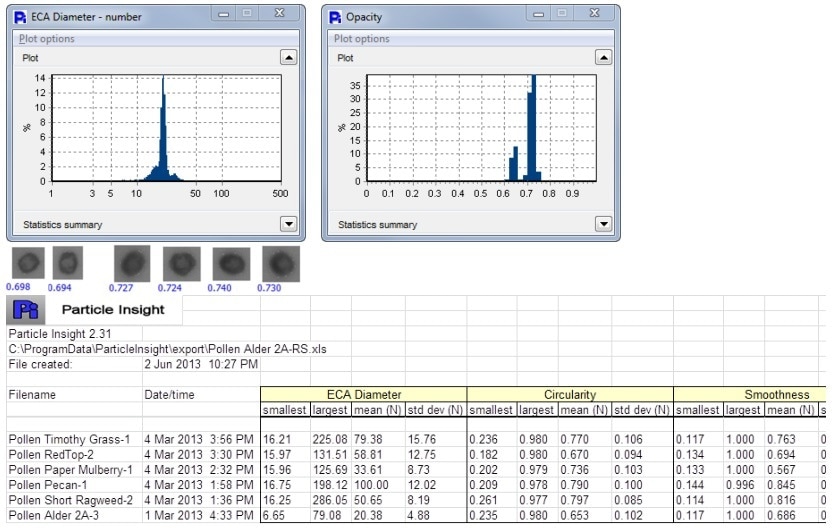
Image Credit: Vision Analytical Inc.
The Particle Insight executes a high speed examination of particles in real time. During this analysis, each examined particle is accompanied by a saved thumbnail image, and its shape measure determination and frame number is also stored. All this information can be described in multiple formats, in addition to the statistical histograms presented in this study.
Excel spreadsheets can likewise be generated for individual samples, and for comparisons, as demonstrated above.

Image Credit: Vision Analytical Inc.
Undertaking an overlay of the total set of pollen samples, and correlating both their size and shape, enables a comprehensive comparison of how the pollen samples compare and contrast.
Broadly speaking, all samples embody reasonable uniformity in terms of particle size. However, as already demonstrated, they do not embody uniformity in terms of morphology. This characteristic can provide a valuable means of visually characterizing each pollen sample, which enables the user to calculate the quantity of cross pollen species in any given sample. The Particle Insight has a distinctive component, known as Particle Classification, which can enhance the efficiency of this process.
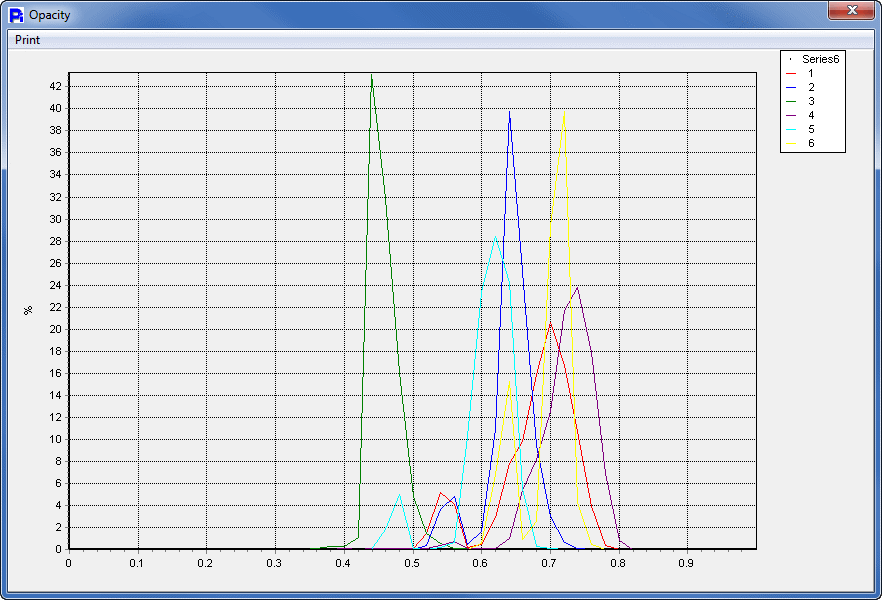
Image Credit: Vision Analytical Inc.
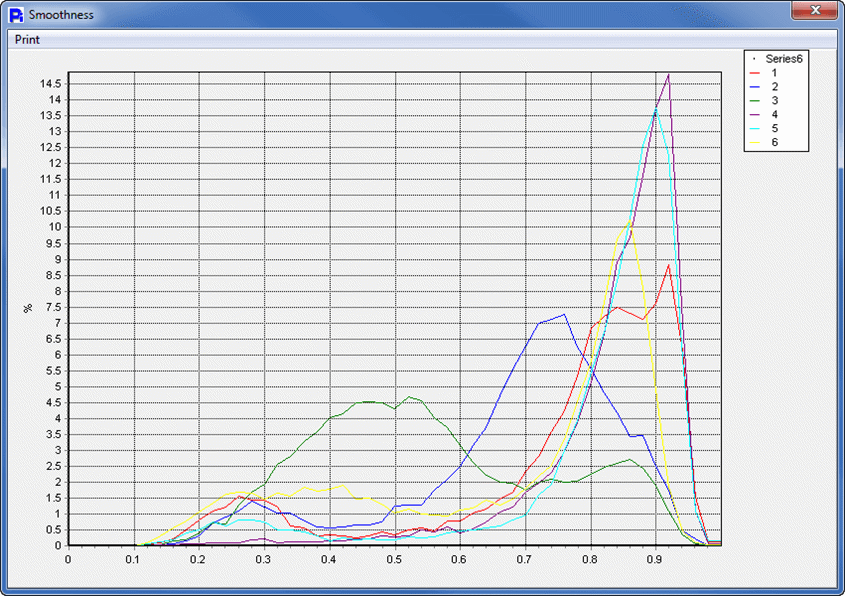
Image Credit: Vision Analytical Inc.
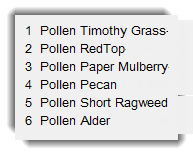
Image Credit: Vision Analytical Inc.
This diagram indicates that, by comparison, all of the pollen samples embody moderately divergent opacity and smoothness. The only real distinction is the Paper Mulberry pollen, which embodies drastically divergent opacity and smoothness (green line in overlay graphs). Moreover, this diagram demonstrates how the Red Top and the Alder Pollen embodied divergent circularity.
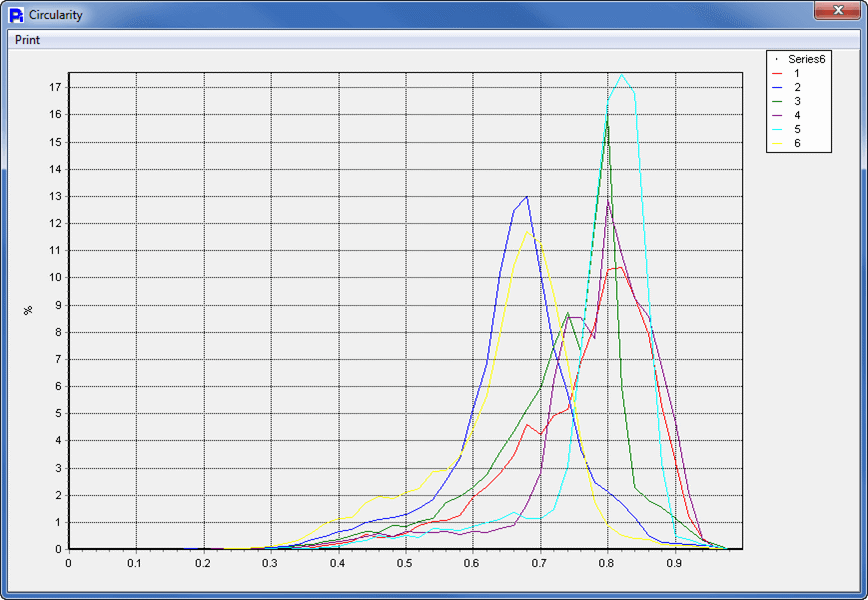
Image Credit: Vision Analytical Inc.
Conclusion
Following the analysis of six separate pollen samples, it becomes possible to observe and describe species' differences, not only according to size but also to other morphology features, such as circularity, smoothness, and opacity. In addition to differentiating between species, it was also possible to demonstrate dual populations of opacity and even circularity within each pollen sample.
The Particle Insight enables the operator to not only determine a maximum of 30 size and shape analysis measures for every particle examined, but also to ascertain concentration and record data in multiple ways.

This information has been sourced, reviewed and adapted from materials provided by Vision Analytical Inc.
For more information on this source, please visit Vision Analytical Inc.